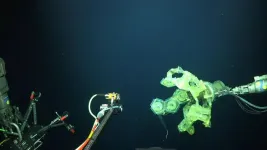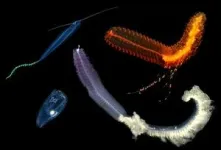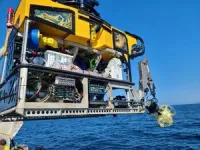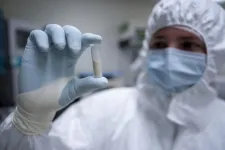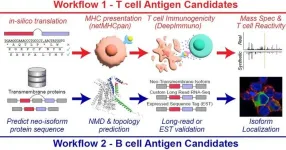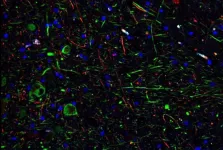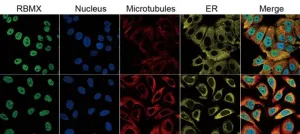(Press-News.org) KINGSTON, R.I. – Jan. 17, 2024 – A University of Rhode Island professor of Ocean Engineering and Oceanography, along with a multidisciplinary research team from multiple institutions, successfully demonstrated new technologies that can obtain preserved tissue and high-resolution 3D images within minutes of encountering some of the most fragile animals in the deep ocean.
URI Professor Brennan Phillips, the principal investigator on the project, and a team of 15 researchers from six institutions, including URI, have shown that it is possible to shave years from the process of determining whether a new or rare species has been discovered. The results of their work are published today in the journal Science Advances. An advanced copy of the article and press package are available.
Roboticists, ocean engineers, bioengineers, and marine and molecular biologists from URI’s Department of Ocean Engineering; the Bigelow Laboratory for Ocean Sciences in East Boothbay, Maine; the School of Engineering and Applied Sciences at Harvard University; Monterey Bay Aquarium Research Institute (MBARI) in California; PA Consulting, a worldwide firm that focuses on innovation; and the Department of Natural Sciences at Baruch College, City University of New York, made up the team. The paper represents five years of research.
Revolutionary advancements in underwater imaging, robotics, and genomic sequencing have reshaped marine exploration, the study reads. The research shows that within minutes of an encounter with a deep-sea animal, it is possible to capture detailed measurements and motion of the animal, obtain an entire genome, and generate a comprehensive list of genes being expressed that point to their physiological status in the deep ocean. The result of this rich digital data is a ‘cybertype’ of a single animal, rather than a physical ‘holotype’ that is traditionally found in museum collections.
“Currently, if researchers want to describe what they believe is a new species, they face an arduous process,” Phillips said. “The way it is done now is you capture a specimen, which is very difficult because a lot of these animals are so delicate and tissue-thin, and it’s likely you may not be able to collect them at all. But if you successfully collect an animal, you then preserve it in a jar. Then begins a long process of physically bringing that specimen to different collections around the world where it is compared to existing organisms. After a long time, sometimes up to 21 years, scientists may reach consensus that this is a new species.
“Again, these are deep-sea, thin little wisps of animals. The current workflow is not appropriate. It’s a major reason why we have so many undescribed species in the ocean.”
Information gained from the study—and others that follow—could be useful for extinction prevention studies, as it provides a wealth of information from a single specimen gained during a single encounter. The work also responds to the growing call among researchers for compassionate collection, which minimizes harm to animals by using advanced technologies to collect information. Future studies and development could allow for complete scans and inventories of life in the deep sea within a catch-and-release framework.
“The vision was: How might a marine biologist work to better understand and connect to deep-sea life decades or centuries into the future?” said David Gruber, Distinguished Professor of Biology at Baruch College, City University of New York, and an Explorer with National Geographic Society. “This is a demonstration on how an interdisciplinary team could work collaboratively to provide an enormous amount of new information on deep-sea life after one brief encounter. The ultimate goal is to continue down this path and refine the technology to be as minimally-invasive as possible—akin to a doctor's check-up in the deep sea! This approach is becoming increasingly important with current extinction being 100 times higher than background extinction rates.”
Phillips said because collecting these samples has always been hard, there are many deep-sea species that have yet to be identified. “When you look at climate change and deep-sea mining and their potential effects, it is unsettling,” Phillips said. “You realize you don’t have a full baseline of species, and you may not know what you’ve lost before it’s too late. If you want to know what has been there before it’s gone, this is a new way to do that.”
The mission, which was funded by the Schmidt Ocean Institute and its Designing the Future program, and conducted on its research vessel Falkor, included two expeditions off the coast of Hawaii and San Diego in 2019 and 2021. The team collected as many as 14 preserved tissue samples a day, along with terabytes of quantitative digital imagery. Together, the study provided:
The first complete assembled and annotated transcriptome (genes being made in the animals’ habitat) of Pegea tunicate, a marine invertebrate animal;
Details of the molecular basis of environmental sensing of a holoplanktonic Tomopteris polychaete (marine worm), which spends its entire life in the water column;
Details of the full transcriptomes of two siphonophores, (gelatinous zooplankton composed of specialized parts growing together in a chain) Erenna sp. and Marrus claudanielis, as well as the Pegea tunicate and Tomopteris polychaete;
Full morphological (form and structure) characterizations using digital imaging of each animal while at depth.
The lead author of the paper, John Burns, a senior research scientist at Bigelow Laboratory, conducted the genomic analysis on four animals sampled at depths of almost 4,000 feet.
“What we were able to achieve with these animals is remarkable,” Burns said. “For me, this is best seen in the sequence data we generated for the Tomopteris worm: We captured it while it was exploring its environment and were able to infer that it was scanning the water using two long sensory whiskers near its head for ‘sweet’ tastes: likely sugars associated with prey, and possibly for ammonia: a waste product of its typical prey.
“With that information, we can envision how it hunts by following chemical trails in its open water habitat,” Burns said. “I don’t think that would have been possible without the innovative technology invented and employed by the engineers on the team that allowed complete preservation of the information from the animals within minutes of an encounter.”
Burns said another study with Gruber looked at how capture methods affect jellyfish ribonucleic acid, known as RNA, one of the building blocks of life. That sequence of information can start to change after about 10 minutes of stressful conditions, even with gentle collection. The Designing the Future technologies overcome this by preserving the information before the animal’s cells start to respond to stress, according to Burns.
“We also discovered that three of the animals we captured have huge genomes: each having nearly 10 times the DNA in a cell compared to us humans!” Burns said. “For the fourth, with a more modestly sized genome (about 3% the size of a human genome) we were able to use cutting edge sequencing methods to build the most cohesive and complete genome of a salp to date.”
Harvard and URI brought to the mission a rotary-actuated folding dodecahedron (RAD-2), an innovative origami-inspired robotic encapsulation device, which collected animal tissue samples and almost instantaneously preserved that tissue at depth.
“We are seeing the impact of new types of marine robots for midwater and deep-sea exploration,” said roboticist Robert Wood, the Harry Lewis and Marlyn McGrath Professor of Engineering and Applied Sciences at Harvard University. “Not only are robots going places that are difficult or impossible for humans to reach, our devices investigate, interact with, and collect specimens using a gentle touch… or no touch at all.”
Imaging systems from MBARI’s Bioinspiration Lab that included a laser-scanning imaging device called DeepPIV and a three-dimensional lightfield camera called EyeRIS enabled the measurement and reconstruction of three-dimensional morphology, or body shape, of the animals in their natural environment.
“We cannot protect what we do not yet fully understand. Advanced imaging technologies can accelerate our efforts to document the diversity of life in the ocean. The faster we can catalog marine life, the better we can assess and track the impact of human actions like climate change and mining on ocean environments,” said Kakani Katija, bioengineer and principal engineer of the Bioinspiration Lab at MBARI.
“We have these remotely operated vehicles out there with advanced imaging systems, which can create a three-dimensional model after only a few minutes,” Phillips said. “We were able to approach a tiny jellyfish in a matter of seconds, collect high-resolution 3D images to the control room, and our team was able to tell in a matter of minutes that the tentacles were exactly 5 millimeters long. Then, we had extremely well-preserved tissue samples of the same animal within a matter of minutes.”
END
URI professor leads effort demonstrating success of new technology in conducting deep-sea research on fragile organisms
Multi-institution team uses quantitative imaging technology, innovative robotic device to capture tissue in minutes, preserve for advanced genomic study
2024-01-17
ELSE PRESS RELEASES FROM THIS DATE:
Woolly mammoth movements tied to earliest Alaska hunting camps
2024-01-17
Researchers have linked the travels of a 14,000-year-old woolly mammoth with the oldest known human settlements in Alaska, providing clues about the relationship between the iconic species and some of the earliest people to travel across the Bering Land Bridge.
Scientists made those connections by using isotope analysis to study the life of a female mammoth, named Élmayųujey'eh, by the Healy Lake Village Council. A tusk from Elma was discovered at the Swan Point archaeological site in Interior Alaska. Samples from the tusk revealed details about Elma and the roughly 1,000-kilometer journey she took through Alaska ...
Researchers chronicle lifetime travels of a single woolly mammoth which wandered the north more than 14,000 years ago
2024-01-17
Attention editors: Embargoed by Science Advances until Wednesday, January 17th, 2 p.m. eastern
High resolution photos, background footage, video clips can be downloaded at this link: https://photos.app.goo.gl/Sn4unWFGHb5ULdeB9
Hamilton, ON, Jan. 17, 2024 – An international team of researchers from McMaster University, University of Alaska Fairbanks and the University of Ottawa has tracked and documented the movements and genetic connections of a female woolly mammoth that roamed the earth more than 14,000 years ago.
She travelled ...
New research tool seeks to accelerate hunt for cancer immunotherapy targets
2024-01-17
An innovative computational tool dubbed “SNAF” may help the research world bring the emerging promise of cancer immunotherapy to a wider range of patients, according to a study published Jan. 17, 2024, in Science Translational Medicine.
The research tool, called the Splicing Neo Antigen Finder (SNAF), was developed by a multidisciplinary team of researchers from Cincinnati Children’s and the University of Virginia. The project was led by Guangyuan Li, PhD, and Nathan Salomonis, PhD, both with the Division of Biomedical Informatics at Cincinnati ...
SARS-CoV-2 can infect dopamine neurons causing senescence
2024-01-17
A new study reported that SARS-CoV-2, the virus that causes COVID, can infect dopamine neurons in the brain and trigger senescence—when a cell loses the ability to grow and divide. The researchers from Weill Cornell Medicine, Memorial Sloan Kettering Cancer Center and Columbia University Vagelos College of Physicians and Surgeons suggest that further research on this finding may shed light on the neurological symptoms associated with long COVID such as brain fog, lethargy and depression.
The findings, published in Cell Stem Cell on Jan. 17, show that dopamine neurons infected with SARS-CoV-2 stop working and send out chemical signals that cause ...
The metalens meets the stars
2024-01-17
Metalenses have been used to image microscopic features of tissue and resolve details smaller than a wavelength of light. Now they are going bigger.
Researchers at the Harvard John A. Paulson School of Engineering and Applied Sciences (SEAS) have developed a 10-centimeter-diameter glass metalens that can image the sun, the moon and distant nebulae with high resolution. It is the first all-glass, large-scale metalens in the visible wavelength that can be mass produced using conventional CMOS fabrication technology.
The ...
New U of A-based study to examine very rare adverse events linked to COVID-19 vaccines
2024-01-17
EDMONTON — A University of Alberta professor is co-leading a new international vaccine safety network to examine why some people who received a COVID-19 vaccine experienced very rare adverse events associated with the vaccine.
The International Network of Special Immunization Services (INSIS), based at the U of A, is a consortium of academic medical centres around the world coming together to study very rare adverse events after vaccination. An adverse reaction is considered very rare when it affects less than .001 per cent of the population.
“The bar for safety with vaccines is very high because we’re giving them ...
$24 million grant to extend Study of Healthy Aging in African Americans (STAR)
2024-01-17
Researchers at UC Davis Health and Kaiser Permanente Division of Research have received a $24 million grant from the National Institute on Aging, part of the National Institutes of Health (NIH), to continue the Study of Healthy Aging in African Americans (STAR) for an additional five years.
STAR, which launched in 2017, follows a group of approximately 750 older adults to understand how behaviors and lifestyle may increase the risk of Alzheimer’s disease and related dementias for Black and African Americans. The study ...
Metastatic breast cancer treatments have aided decline in deaths, Stanford Medicine-led study finds
2024-01-17
Deaths from breast cancer dropped 58% between 1975 and 2019 due to a combination of screening mammography and improvements in treatment, according to a new multicenter study led by Stanford Medicine clinicians and biomedical data scientists.
Nearly one-third of the decrease (29%) is due to advances in treating metastatic breast cancer —a form that has spread to other areas of in the body and is known as stage 4 breast cancer or recurrent cancer. Although these advanced cancers are not considered curable, women with metastatic disease are living longer than ever.
The analysis helps cancer researchers assess where to focus future efforts and resources.
“We’ve ...
Aberrant RBMX expression relevant for cancer prognosis and immunotherapy response
2024-01-17
“In the future, targeting of RBMX may be a novel method in cancer therapy.”
BUFFALO, NY- January 17, 2024 – A new research paper was published in Aging (listed by MEDLINE/PubMed as "Aging (Albany NY)" and "Aging-US" by Web of Science) Volume 16, Issue 1, entitled, “Aberrant RBMX expression is relevant for cancer prognosis and immunotherapy response.”
Cancer accounts for the highest rates of morbidity and mortality worldwide. RNA binding motif protein X-linked (RBMX) is a nuclear ...
Higher measurement accuracy opens new window to the quantum world
2024-01-17
A team at HZB has developed a new measurement method that, for the first time, accurately detects tiny temperature differences in the range of 100 microkelvin in the thermal Hall effect. Previously, these temperature differences could not be measured quantitatively due to thermal noise. Using the well-known terbium titanate as an example, the team demonstrated that the method delivers highly reliable results. The thermal Hall effect provides information about coherent multi-particle states in quantum materials, based on their interaction with lattice vibrations (phonons).
The laws of quantum physics apply to all materials. However, in so-called ...
LAST 30 PRESS RELEASES:
Scientists trace microplastics in fertilizer from fields to the beach
The Lancet Obstetrics, Gynecology, & Women’s Health: Taking paracetamol during pregnancy does not increase risk of autism, ADHD or intellectual disabilities, confirms new gold-standard evidence review
Taking paracetamol during pregnancy does not increase risk of autism, ADHD or intellectual disabilities
Harm reduction vending machines in New York State expand access to overdose treatment and drug test strips, UB studies confirm
University of Phoenix releases white paper on Credit for Prior Learning as a catalyst for internal mobility and retention
Canada losing track of salmon health as climate and industrial threats mount
Molecular sieve-confined Pt-FeOx catalysts achieve highly efficient reversible hydrogen cycle of methylcyclohexane-toluene
Investment in farm productivity tools key to reducing greenhouse gas
New review highlights electrochemical pathways to recover uranium from wastewater and seawater
Hidden pollutants in shale gas development raise environmental concerns, new review finds
Discarded cigarette butts transformed into high performance energy storage materials
Researchers highlight role of alternative RNA splicing in schizophrenia
NTU Singapore scientists find new way to disarm antibiotic-resistant bacteria and restore healing in chronic wounds
Research suggests nationwide racial bias in media reporting on gun violence
Revealing the cell’s nanocourier at work
Health impacts of nursing home staffing
Public views about opioid overdose and people with opioid use disorder
Age-related changes in sperm DNA may play a role in autism risk
Ambitious model fails to explain near-death experiences, experts say
Multifaceted effects of inward foreign direct investment on new venture creation
Exploring mutations that spontaneously switch on a key brain cell receptor
Two-step genome editing enables the creation of full-length humanized mouse models
Pusan National University researchers develop light-activated tissue adhesive patch for rapid, watertight neurosurgical sealing
Study finds so-called super agers tend to have at least two key genetic advantages
Brain stimulation device cleared for ADHD in the US is overall safe but ineffective
Scientists discover natural ‘brake’ that could stop harmful inflammation
Tougher solid electrolyte advances long-sought lithium metal batteries
Experts provide policy roadmap to reduce dementia risk
New 3D imaging system could address limitations of MRI, CT and ultrasound
First-in-human drug trial lowers high blood fats
[Press-News.org] URI professor leads effort demonstrating success of new technology in conducting deep-sea research on fragile organismsMulti-institution team uses quantitative imaging technology, innovative robotic device to capture tissue in minutes, preserve for advanced genomic study
